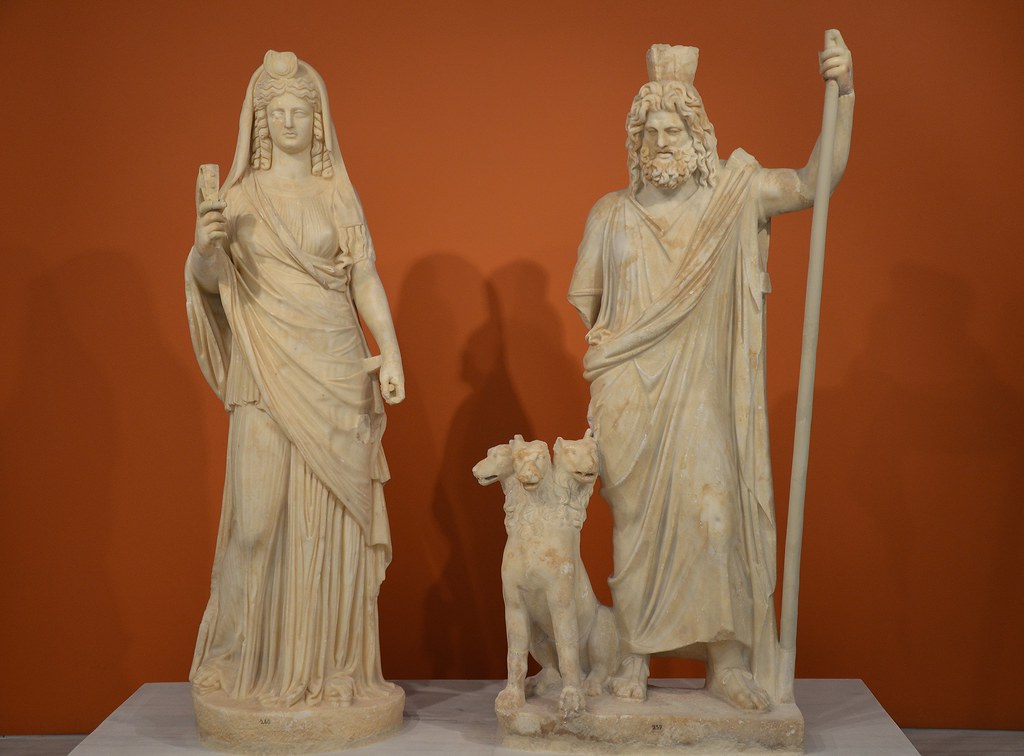Persephone: Goddess of Spring and Queen of the Underworld

Welcome back, Greeks and Geeks! Yesterday was the Spring Equinox, which means spring is finally here!
To the Greeks, spring meant that Persephone, the Goddess of Spring, came back to the Overworld after spending the winter in the Underworld. In fact, the seasons started because of Persephone. But let’s go back to the beginning of Persephone first.
Demeter is the Goddess of Agriculture, and her main role was to keep the Earth fertile and provide rich bounty to mankind. She had a daughter, who originally was named Kore (or Core), which meant “The Maiden.” She was the goddess of the spring bounty.

Demeter and Kore happily kept the Earth in a perpetual summer, with the world always in harvest, with food being plentiful and always ready. Demeter kept her daughter close to her, would not let her do anything without her a-okay. Kore was naïve to the world because of Demeter’s controlling tendencies.
Hades, God of the Underworld and the Dead, saw Kore in the Overworld, and was captivated by her beauty. He kept watching her, and slowly fell in love with her.
He went to Zeus to ask him permission to marry, or at least court, the spring goddess. Zeus, knowing Demeter would never allow it, told him he gave him permission, but to simply kidnap her instead rather than get rejected by Demeter. (Great dating advice, Zeus! -note the sarcasm-).
So, one day, Hades saw Kore in a field, but she was far away from her companions, so he rode up through the Earth on his chariot and kidnapped her, and brought her into the Underworld with him.

When Demeter came looking for her daughter, she became distraught when she noticed she was gone. She looked for her for ten days, before finally being told by Helios, Titan of the Sun, who saw everything, that Hades had taken her.
Demeter went to Zeus and demanded that he return Kore to her, and he refused, so Demeter then went to Hermes. Hermes was successful in retrieving Kore, but Persephone came back instead.
You see, during those ten days, Hades told Persephone that he wanted to marry her, that he would treat her as his equal, that she would be Queen of the Underworld. He created Elysium for her, so people who were good when they were alive would be treated with that same goodness in death. Because of these things, she slowly began to fall in love with him, too. He fed her pomegranate seeds, which meant that she now belonged in the Underworld.
Pomegranate is a fruit of the Underworld, at least to the Ancient Greeks, and anyone who ate the food of the Underworld would want to stay there, and must stay in the Underworld, for if they left they would always have to come back.
So, Persephone was now one with the Underworld, and she belonged there. She even thrived there. Her name changing to Persephone meant that she was no longer “The Maiden,” but now “The Bringer of Death.” (Persephone literally means “to destroy and murder,” but the Ancient Greeks often referred to her as the Bringer of those things instead.)
Zeus and Demeter argued about where Persephone now belonged, because Zeus had given his consent for Hades to marry Persephone, but Demeter was letting the Earth freeze, and mortals were beginning to die because of the famine.
Because Persephone ate the pomegranate seeds, she needed to stay in the Underworld, ruling it alongside Hades. So, Zeus decreed that she would remain there for half the year, and the rest of the year she would return to Demeter.
That’s how the seasons began – when Persephone is with Hades, Demeter lets the world go into autumn and winter, and lets all plants die, and when Persephone is with Demeter, they work together to bring growth back to the world.
As the Queen of the Underworld, Persephone appeared in various myths alongside Hades. He stayed true to his promises, and she became his equal. She made decisions that heavily influenced the stories of Hercules and Orpheus.

And despite the way that Hades and Persephone came to be together, they did truly love each other. Hades was one of the only Gods who looked to his wife as an equal, and gave equal powers over what he once ruled alone. Persephone, though often regarded as just the Goddess of Spring, which makes you picture flowers and sunshine, was indeed the Queen of the Underworld, and mortals feared her in ancient times. Ancient Greeks used both of their names as curses, but seldom even spoke them.
With spring now here, it means that Persephone’s time in the Underworld is over for now, and growth will return. I hope you enjoy it as much as I do.
Thank you for reading, and I hope to see you again soon. Αντίο, Σοφία.



